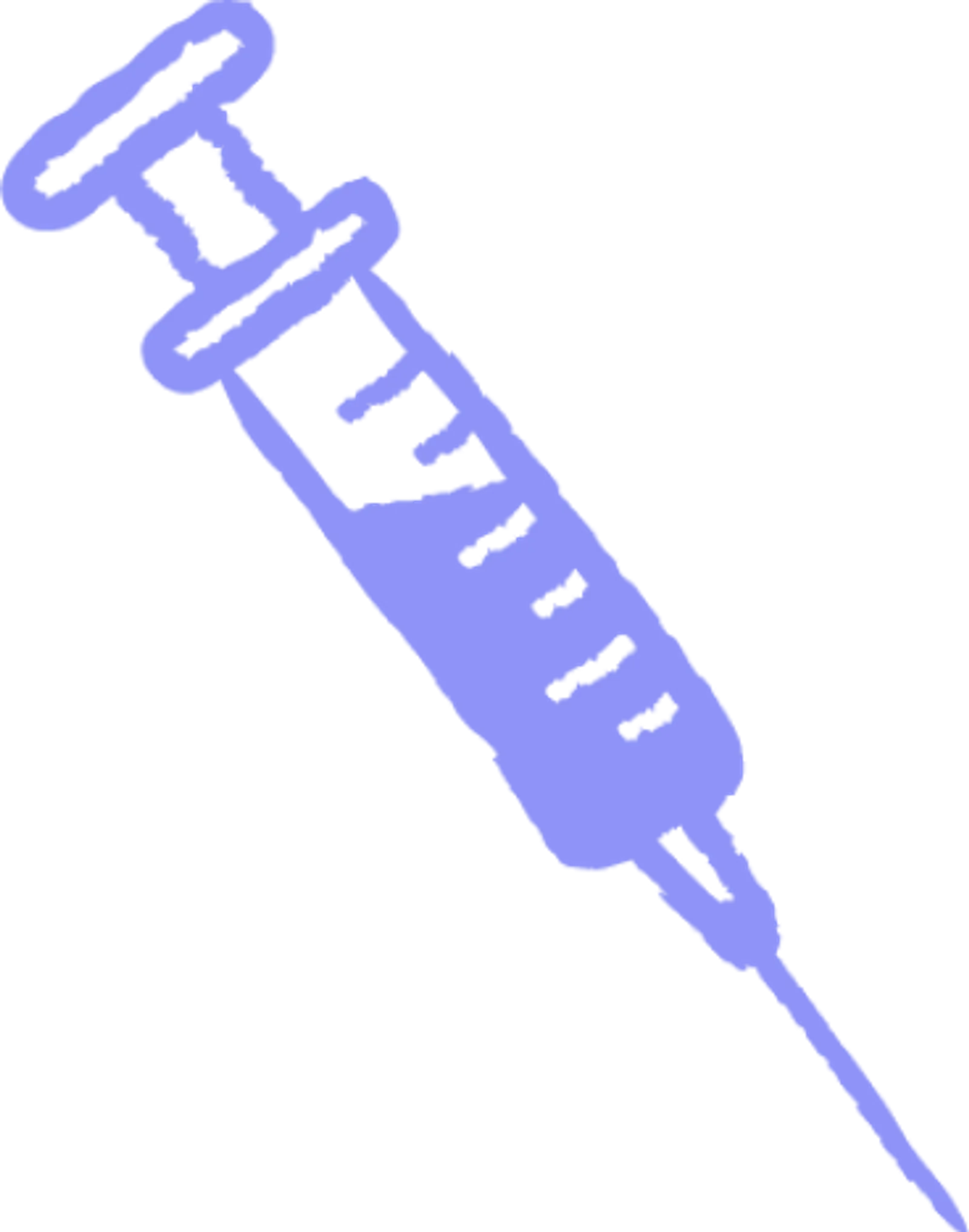Plasma 101
Who: Eligible donors between 18 and 63 can earn up to $560 a month in NY and up to $770 a month in FL.
What: Plasma is the yellow part of your blood that replenishes naturally.
Where: Queens, Brooklyn, The Bronx (NY), and Ft. Pierce (FL).
Why: Get paid to donate and help treat bleeding disorders, immune deficiencies, and more.
When: No appointment needed—walk in anytime before closing.
Plasma Donation: FAQs Answered

Plasma Donation: FAQs Answered
Plasma donation provides life-saving treatments to thousands in need, but misconceptions often deter would-be donors. This article clearly outlines eligibility, safety, payment, and impact to address all common questions hampering donation participation. Readers can expect science-backed data on plasma uses, donation logistics, ways to contribute to community health, and resources to consult before registering informed decisions on this meaningful cause. All your plasma donation questions will be answered!
Healthy adults age 18-65 weighing at least 110 pounds can donate plasma up to 104 times per year. The hour-long process is extremely safe with complication rates less than 1 in 15,000. Donated plasma produces medications treating bleeding disorders, respiratory illnesses, immune diseases, trauma, and deficiencies. Generous plasma donors save thousands of lives.
Eligibility and Process of Plasma Donation:
Criteria | Description |
Age Requirement | 18-64 years old |
Weight Requirement | Minimum of 110 pounds |
General Health | Good health, no transmittable diseases |
Medical Screening | Blood pressure, pulse, temperature, protein, and hematocrit levels checked |
Disqualifications | Certain medical conditions (e.g., HIV, hepatitis), organ transplant, seizure history, recent childbirth |
Donation Process | Registration, medical exam, plasma extraction (600-800ml), post-donation recovery, compensation |
Eligibility and Process of Plasma Donation
Who Can Donate Plasma?
Donating plasma is an extremely safe process with minimal risk to healthy donors when proper eligibility criteria are followed. Plasma donation centers have strict health and lifestyle requirements in order to protect the donor's wellbeing and ensure high-quality plasma is collected.
To be eligible to donate plasma, you must be between the ages of 18-64 and weigh at least 110 pounds. Meeting the minimum weight threshold helps ensure donors have sufficient blood volume for the donation procedure.
Additionally, when it comes to plasma donation and your health, you must be in good general health without any transmittable diseases. Donors have their blood pressure, pulse, temperature, protein, and hematocrit levels tested at every visit to confirm it is safe for them to donate. Certain medical diagnoses may disqualify you temporarily or permanently per FDA guidelines, including HIV, hepatitis, organ transplant, or seizure history. Pregnant women also cannot donate until at least 6 weeks after giving birth.
By complying with all eligibility criteria, donors are kept safe while allowing plasma collection centers to produce life-saving plasma therapies from high-quality plasma. The strict health standards protect both the selfless plasma donors and the recipients who depend on plasma-based medications.
The Step-by-Step Plasma Donation Process
How does donating plasma work? The plasma donation process is simple, easy, and convenient at certified plasma collection centers. The entire appointment lasts between 1-2 hours depending on if it is your first visit. Here is an overview of what to expect:
First, you check in and provide identification and basic demographic information. If it is your first time donating, you will need to pass a medical exam testing your vitals, protein levels, etc per FDA requirements.
Next, a staff member will escort you to a donation bed and provide you with reading materials or WiFi access to entertain you during the process. They will sanitize the donation area of your arm before inserting a sterile needle to collect your blood. The equipment separates your blood into red blood cells and plasma, returning the red blood cells to your body while collecting the plasma.
Throughout the donation, trained medical staff supervise the process and monitor for any potential reactions. You can relax comfortably in the bed while the machine does all the work usually extracting between 600-800ml of plasma.
Afterward, staff remove the needle and bandage your arm before escorting you to the refreshment area. Here you can replenish fluids and proteins while resting for at least 15 minutes. Once recovered, you receive compensation for your donation loaded directly onto a pre-paid card.
The streamlined, modern process makes donating plasma simple for the 2 million Americans providing life-saving plasma donations every year. The oversight and care from the staff keeps donors safe and comfortable from registration to completion.
Commonly Asked Questions About Plasma Donation:
Question | Answer |
What is Plasma? | The clear, straw-colored liquid part of blood, carrying cells and proteins |
Importance of Donation | Vital for creating treatments for various conditions like immune diseases, bleeding disorders |
Donation Frequency | Up to twice per week, with at least one day between donations |
Pain Level | Minimal discomfort, mainly during needle insertion |
Plasma Usage | Clinical and research applications, including treatment for bleeding disorders, autoimmune diseases |
Safety and Risks | Extremely safe, rare risks include dizziness, nausea, nerve injury, infection |
Post-Donation Effects | Mild dizziness, nausea, tingling, headache; resolves with fluids and rest |
Benefits of Donated Plasma | Produces life-saving medicines, supports public health and research |
Commonly Asked Questions About Plasma Donation
What is Plasma and Why is it Important to Donate?
Plasma is the clear, straw-colored liquid portion of blood that carries cells and proteins throughout the body. It makes up about 55% of total blood volume and is critical for circulating nutrients, hormones, clotting factors, and antibodies.
Plasma contains special proteins that are used to create lifesaving medical treatments for various conditions. These plasma protein therapies treat patients with bleeding disorders like hemophilia, immune diseases, shock and trauma, respiratory illnesses, and chronic diseases like primary immunodeficiency.
Pharmaceutical companies fractionate donated plasma into its components to manufacture these specialized protein-based medications. About 30 plasma donations produces enough for a year’s worth of treatment for one primary immunodeficiency patient. Without generous plasma donors, thousands of people would lose access to the plasma medicines they rely on.
That’s why donating plasma on a regular basis is so important - it directly helps ensure patients get the treatments they desperately need. Plasma donors enjoy compensation for their time while knowing they are saving lives.
Who Can Donate Plasma and Are There Any Restrictions?
Let’s look at when you can and can’t donate plasma. Plasma donation is extremely safe, but centers have eligibility requirements to protect donor health. You must be 18-64 years old in most states and weigh at least 110 pounds.
You cannot have any transmittable blood-borne diseases like HIV or hepatitis B/C, history of viral infections like West Nile, history of intravenous drug use, or recent tattoos or piercings. Pregnant women cannot donate as the process could harm the fetus.
Many medications, chronic conditions, travel histories, or sexual behaviors may require a temporary deferral until you meet safety requirements. Each donor is evaluated confidentially during screening.
Eligibility is focused on safety, but most healthy adults can donate plasma without issue providing all safety measures are followed. The extensive screening process ultimately safeguards donors while providing high-quality plasma for production.
How Often Can I Donate Plasma?
You can donate plasma up to twice per seven-day period, with at least one day between donations, allowing about 104-110 donations per year. However, most donors average 20-40 annual donations.
Limits on donation frequency protect donor health and prevent over-donation. Your body needs adequate time to regenerate proteins and fluids lost during the plasma removal process before undergoing another collection.
Frequent plasma donations may lead to low protein levels, fatigue, decreased immunity, irritability, or fainting if you do not allow your body to recover properly. Staying adequately hydrated and eating a balanced diet with 70+ grams of protein daily helps boost recovery between donations.
Plasma centers track your donation frequency and may restrict more frequent donations if they identify potential health risks with your plasma donation. They act in the best interest of both donors and recipients when imposing safety limitations.
Is Plasma Donation Painful?
Plasma donation is minimally painful for most donors. You may feel a pinch or sting when the sterile needle is first inserted into your arm and a mild ache during periods when blood flow into the machine is highest. However, technology improvements allow adjustable pull rates for increased comfort.
Staff provide pillows, blankets, free WiFi, movies, and music to help you relax during the process, distracting from temporary discomfort. The state-of-the-art equipment withdraws blood slowly and continuously mixes fluids back into your body to avoid clotting issues or blood pressure drops that increase pain.
After donation, applying gentle pressure to the venipuncture site aids comfort and quick clotting. Mild bruising or fatigue may occur but generally resolves within 12-24 hours. Serious complications are extremely rare when following proper procedures under staff supervision.
Overall, plasma donation is well-tolerated with only minimal discomfort during insertion and temporary post-donation fatigue in some individuals. Most donors grow accustomed to the brief stinging sensation and find the process easy over time.
How is Plasma Used After Donation?
Let’s look at the science behind plasma donation. Donated plasma serves a variety of clinical and research applications focused on improving health outcomes. Plasma contains antibodies and proteins used to treat bleeding disorders, autoimmune diseases, respiratory conditions, trauma, shock, and primary immunodeficiency through transfusion or manufactured therapies. The life-saving power of plasma is underscored by its versatility in addressing a spectrum of medical challenges, making it a crucial resource in enhancing health outcomes and advancing medical research.
Let’s talk about where your plasma goes after it’s been donated. Specialty pharmaceutical companies fractionate plasma into hyperimmune globulins, clotting factors, and albumin using purification processes. These plasma-derived medicines treat rabies, hepatitis B, tetanus, Rh incompatibility, emphysema, and parvovirus while advancing healthcare and biomedical science.
Research institutions also use plasma alongside viable blood cells for transfusion medicine research studying red blood cell physiology, blood storage solutions, reproduction of platelets, cryopreservation, and pathogen reduction technologies. Plasma donations may aid cutting-edge research to improve treatment efficacy and blood storage/safety.
Ultimately plasma fuels a variety of crucial medical and research applications to diagnose diseases, develop innovative therapies, save lives in emergencies, and enhance clinical care knowledge. Donors should feel proud knowing their compassionate act goes on to benefit thousands in need.
Addressing Concerns About Plasma Donation
Safety and Risks in Plasma Donation
Plasma donation utilizes single-use, sterile equipment and is extremely safe when FDA guidelines are followed. Donors are monitored by trained staff and doctors to minimize risks.
Potential risks include mild dizziness or nausea from fluid/protein loss, nerve injury if the needle misses the vein, bacterial infection if equipment isn’t properly sterilized, or iron deficiency from frequent donation. Allergic reactions to anticoagulant solutions or blood pressure medications rarely occur.
However, these risks are exceptionally rare, with published complication estimates around 1-4 per 10,000 donations. Olgam Life boasts complication rates less than 1 per 15,000 donations thanks to rigorous standards exceeding FDA requirements.
Mandatory health screening, staff training protocols, and use of single-use disposable tubing sets and needles prevent issues. Phlebotomists carefully monitor donors throughout the process and halt donations if abnormalities appear on vital sign telemetry systems.
Ultimately with proper safeguards in place, plasma donation is low-risk. Donors can have peace of mind knowing their wellbeing is the top priority.
Handling Post-Donation Effects
Typical post-donation effects include mild dizziness, nausea, tingling lips/fingers from calcium changes, or headache as your body replenishes fluids. These sensations normally resolve by drinking fluids before leaving the center.
More significant but still mild side effects like moderate fatigue, muscle aches, bruising/swelling at the venipuncture site, or continued lightheadedness may last 24-48 hours post-donation as your plasma regenerates. Excellent at-home care tips include:
Drink extra fluids like water or electrolyte beverages
Eat foods rich in protein and iron
Avoid strenuous activity for 24 hours
Use heating pads and massage donation arm
Take over-the-counter pain relievers as needed
Rarely, some individuals experience worrisome symptoms like chest pain, leg numbness/tingling, severe headache, prolonged bleeding, or lack of concentration. If these or other serious reactions occur, call the plasma center immediately or proceed to an Emergency Department - don't ignore them. Staff members undergo training to recognize and manage uncommon donor reactions requiring medical intervention.
With standard guidelines focused on safety and comfort, most individuals tolerate the plasma donation process extremely well. Minor temporary effects easily resolve at home, while staff address uncommon severe reactions on-site if necessary before they become dangerous issues.
Benefits and Uses of Donated Plasma
Therapeutic and Medical Benefits
Donated plasma provides an array of therapeutic benefits to patients by manufacturing life-saving medicines. Plasma contains unique proteins like clotting factors, immunoglobulins, and albumins used to create specialized therapies treating various illnesses.
Medications derived from plasma address immune deficiencies, bleeding disorders, respiratory conditions, trauma recovery, shock, burns, rabies, tetanus, and hematologic cancers. Plasma also serves as a transport medium for delivering therapeutics targeting organ deficiencies, infections, or metabolic dysfunction.
Specific plasma-based drugs include:
Clotting factors for hemophilia patients
Immunoglobulins to treat immune diseases
Albumin for serious burn victim recovery
Antitoxins preventing tetanus or rabies
RhoGAM preventing Rh blood type incompatibility
Without plasma donations, thousands of patients would lose access to these unique human-based therapies and medical treatments. The generous gift of plasma allows life-changing medicines to be manufactured for those relying on them.
Contribution to Public Health and Research
Beyond direct patient treatment, donated plasma also advances public health initiatives and biomedical research broadly. Plasma donations support crucial research by supplying necessary biological materials to power studies.
Plasma provides researchers cellular and protein components to investigate bleeding disorders, blood substitutes, infectious disease transmission, immunization responses, medication toxicities, and technologic innovations like pathogen reduction methods and cryopreservation advancements. Studies utilizing donated plasma serve to optimize blood storage techniques, further understand platelet physiology, or reproduce platelets in vitro to treat low platelet disorders.
By willingly donating plasma without compensation, individuals can directly enable dozens of impactful public health and research programs annually. These initiatives not only promote scientific progress but also protect community wellness through enhanced blood safety protocols, treatment efficacy profiling, and emergency preparedness measures. Plasma donors should feel proud to positively contribute on a societal level this way.
How to Get More Information
Resources for Potential Donors
Many valuable resources provide further information for those considering becoming plasma donors. Excellent places to start include informational websites like the Plasma Protein Therapeutics Association, DonatingPlasma.org, and World Blood Donor Day.
These sites offer plasma donation guides detailing the process, eligibility criteria, payment information, health impacts, plasma’s role in healthcare, and answers to frequently asked questions. Those sites will address basics, but specialized local resources also prove useful.
Olgam Life provides detailed proprietary information on what new donors can expect at their specific plasma collection centers. Their website highlights location hours and contact information, first visit processes, post-donation recuperation protocol, payment methods, and plasma center amenities for an enhanced donor experience.
Those unable to access web content can call donor support lines to request informational brochures be mailed with written details about plasma donation at their area centers. Support teams guide potential donors to useful reference materials specific to Olgam Life’s services and branch offerings.
Contacting Healthcare Professionals
While informational websites help educate, personalized medical advice from healthcare professionals proves invaluable for prospective donors weighing options. Speaking to a doctor allows addressing unique health factors impacting donation eligibility or suitability through confidential consultation.
Physicians can review health histories and advise how underlying chronic illness like diabetes, hypertension, autoimmunity, or heart disease might interfere with donating plasma safely. They will provide guidance on any special precautions needed given health vulnerabilities. Doctors can also interpret complex test results during medical screenings that might temporarily or permanently defer donors.
Nurses represent another approachable option for obtaining tailored medical recommendations about plasma donation and managing post-donation symptoms based on nurses’ clinical experience in the field. Their familiarity with practical challenges donors face makes them ideal consultants.
By pairing general publicly available resources with personalized input from trusted healthcare providers, prospective plasma donors can make optimally informed decisions benefiting their health and the greater good.
Olgam Life provides the high-quality plasma donations essential for cutting edge research. If you have any questions, give us a call or check out our frequently asked questions.
















